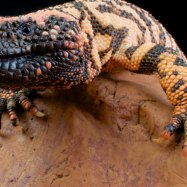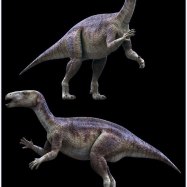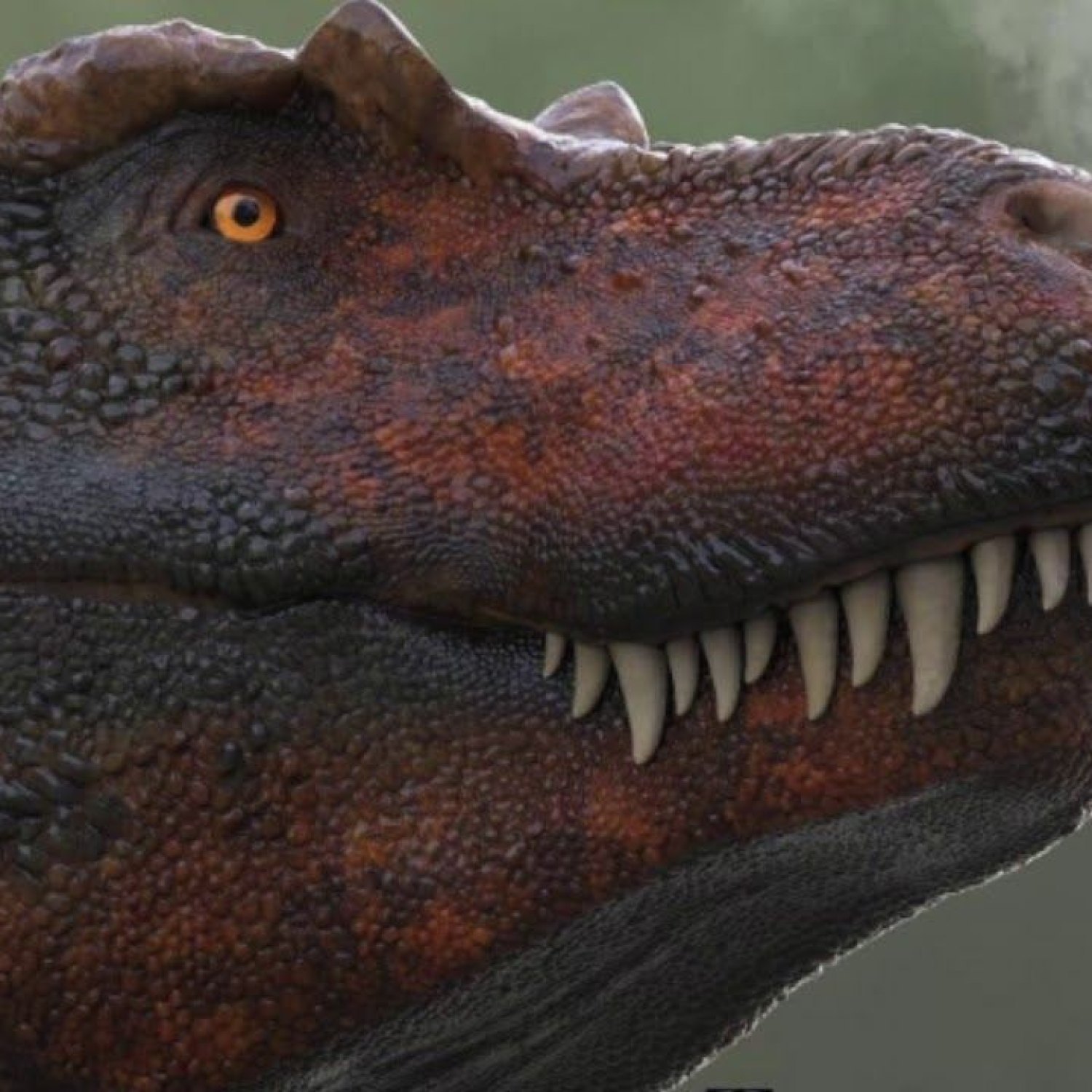
Tyrannosaurus Rex
40 feet (12 meters)
Tyrannosaurus Rex, also known as the king of the dinosaurs, roamed the earth over 65 million years ago. It was a fearsome predator, measuring 40 feet in length and weighing around 8 tons. Fossils of this iconic species have been found in Montana, Wyoming, and South Dakota. Belonging to the Tyrannosauridae family, its large and muscular body shape made it a powerful hunter. Explore the world of this ancient beast and its legacy in museums and documentaries. #TyrannosaurusRex #Dinosaurs #AncientSpecies
Animal Details Summary:
Common Name: Tyrannosaurus Rex
Kingdom: Animalia
Habitat: Terrestrial
Tyrannosaurus Rex: The King of Dinosaurs
Deep in the prehistoric past, roaming the lush landscape of North America, lived a monster of mythic proportions. A creature that struck fear into the hearts of all living beings with its massive size, deadly jaws, and powerful legs. This fearsome predator is none other than the Tyrannosaurus Rex, known as the King of Dinosaurs.Scientifically classified as Tyrannosaurus rex, this iconic dinosaur ruled the land during the Late Cretaceous period, approximately 67 to 65 million years ago Tyrannosaurus Rex. With its distinct features and colossal size, the Tyrannosaurus Rex has captured the imagination of humans ever since its discovery in the late 19th century. In this article, we will delve into the world of this awe-inspiring creature and explore its unique characteristics, habits, and habitats.
A Name Fit for a King
The name Tyrannosaurus Rex may seem intimidating, and for a good reason. It comes from the Greek words "tyrannos," meaning tyrant, and "sauros," meaning lizard, and "rex," meaning king. Together, it translates to "King Tyrant Lizard," a fitting name for an animal that reigned over the prehistoric world.The name was first used by paleontologist Henry Fairfield Osborn in 1905, after the discovery of the first T. Rex skeleton at the Hell Creek Formation in Montana. Since then, over 50 Tyrannosaurus Rex skeletons have been discovered, making it one of the most well-known and well-studied dinosaurs.
A Prehistoric Lineage
The Tyrannosaurus Rex belongs to the Animalia kingdom, which includes all living organisms Thalassomedon. It is classified as a chordate, which means it has a spinal cord and a backbone, making it a member of the Chordata phylum. It also falls under the class Reptilia, as it is a reptile, and the order Saurischia, which includes all dinosaurs and their relatives.Within the Saurischian order, the T. Rex belongs to the family Tyrannosauridae, which includes other large theropods (meat-eating dinosaurs) such as Tarbosaurus and Albertosaurus. This family is known for their massive size and powerful jaws, making them apex predators of their time.
A Terrestrial Titan
The Tyrannosaurus Rex was a land-dwelling creature, meaning it lived on the ground rather than in water or air. Its habitat was primarily in North America, although some fossils have been discovered in other parts of the world, such as Canada and Asia.Within North America, the T. Rex was most commonly found in the United States, specifically in the states of Montana, Wyoming, and South Dakota. These areas were once home to lush forests and abundant prey, making it an ideal location for these massive predators to thrive.
Hunger for Meat
One of the most well-known facts about the Tyrannosaurus Rex is its carnivorous diet. It is estimated that they consumed up to 500 pounds of meat in one feeding, making them some of the most voracious predators of all time. Their diet would have consisted of other dinosaurs, such as Triceratops and Edmontosaurus, as well as smaller animals like reptiles and mammals.The T. Rex's feeding method involved sharp, serrated teeth and powerful jaws that could generate up to 12,800 pounds of force in a single bite. Their teeth were over 6 inches long and were constantly growing and replacing, ensuring they always had sharp, efficient weapons for hunting and eating.
The Ultimate Predator
What made the Tyrannosaurus Rex the ultimate predator? First and foremost, its size. The T. Rex could reach lengths of up to 40 feet (12 meters) and weigh a staggering 9 tons, making it one of the largest carnivorous dinosaurs to have ever lived. It is estimated that it could run up to 25 miles per hour, making it a formidable opponent for any prey.Additionally, its body shape and structure were perfectly adapted for hunting and killing. Its long, powerful legs gave it a stable base for running and could support its massive body weight. Its arms, on the other hand, were relatively small and were likely used for grabbing onto prey or stabilizing itself while feeding. Its large head and powerful jaws housed its sharp, deadly teeth, making it an expert killing machine.
An Earth-Shattering Ending
Despite being one of the most dominant creatures to have ever roamed the Earth, the Tyrannosaurus Rex met its eventual demise like all other dinosaurs. Its extinction is believed to have been part of the larger event known as the Cretaceous-Paleogene extinction event, which wiped out over 75% of all plant and animal species on Earth.The exact cause of the T. Rex's extinction is still a topic of debate among scientists. The leading theories include a catastrophic asteroid impact, drastic climate change, or a combination of both. Regardless of the cause, it is clear that the Tyrannosaurus Rex's reign as the King of Dinosaurs came to an end.
Fascinating Fossils
Thanks to the incredible preservation of its bones and the dedication of paleontologists, we have been able to learn a great deal about the Tyrannosaurus Rex. Along with the over 50 T. Rex skeletons discovered, numerous other fossils, including footprints, teeth, and skin impressions, have also been found and studied.Through these fossils, scientists have been able to reconstruct the T. Rex's appearance, behavior, and even its possible coloration. It is believed that the T. Rex may have had a brownish to greenish-gray coloration, similar to modern-day crocodiles, to blend in with its surroundings and aid in hunting.
Modern-Day Marvels
While the Tyrannosauridae family may have gone extinct, their legacy lives on through modern-day birds. Recent evidence suggests that birds are descendants of theropods, the same group of dinosaurs that the T. Rex belonged to. This means that the King of Dinosaurs still has living relatives today, although in much smaller and less fearsome forms.In addition to its living descendants, the Tyrannosaurus Rex remains a cultural icon, appearing in numerous books, movies, and other forms of media. Its fierce appearance and reputation as the ultimate predator have cemented its place in popular culture, making it one of the most well-known and beloved dinosaurs of all time.
In Conclusion
The Tyrannosaurus Rex may have gone extinct millions of years ago, but its legacy lives on. As the King of Dinosaurs, it was a fearsome predator with unique characteristics perfectly adapted for survival and hunting. Through fossils and scientific research, we have been able to learn about this iconic creature and its place in Earth's history. So next time you see a depiction of the T. Rex, remember that it was once the ruler of the prehistoric world, and its legacy lives on through us.

Tyrannosaurus Rex
Animal Details Tyrannosaurus Rex - Scientific Name: Tyrannosaurus rex
- Category: Animals T
- Scientific Name: Tyrannosaurus rex
- Common Name: Tyrannosaurus Rex
- Kingdom: Animalia
- Phylum: Chordata
- Class: Reptilia
- Order: Saurischia
- Family: Tyrannosauridae
- Habitat: Terrestrial
- Feeding Method: Carnivorous
- Geographical Distribution: North America
- Country of Origin: United States
- Location: Montana, Wyoming, South Dakota
- Animal Coloration: Brownish to greenish-gray
- Body Shape: Large, muscular
- Length: 40 feet (12 meters)
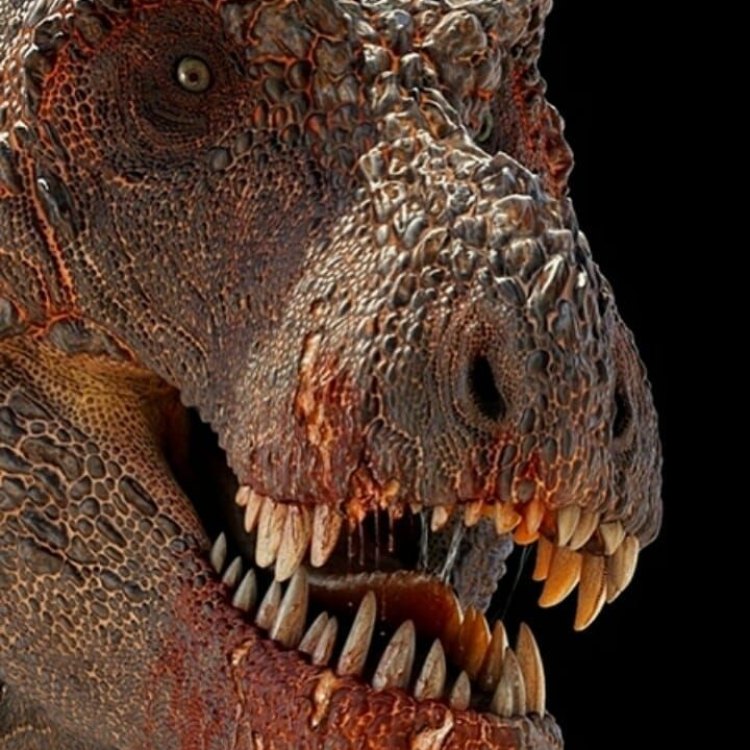
Tyrannosaurus Rex
- Adult Size: Up to 40 feet (12 meters) in length and up to 20 feet (6 meters) in height
- Average Lifespan: Between 20 and 30 years
- Reproduction: Sexual
- Reproductive Behavior: Egg-laying
- Sound or Call: Unknown
- Migration Pattern: Non-migratory
- Social Groups: Solitary
- Behavior: Aggressive, territorial
- Threats: Extinction
- Conservation Status: Extinct
- Impact on Ecosystem: Top predator, shaping the ecosystem
- Human Use: Fossil research, education, entertainment
- Distinctive Features: Large size, powerful jaws, small forelimbs
- Interesting Facts: One of the largest carnivorous dinosaurs, known for its powerful bite
- Predator: Apex predator
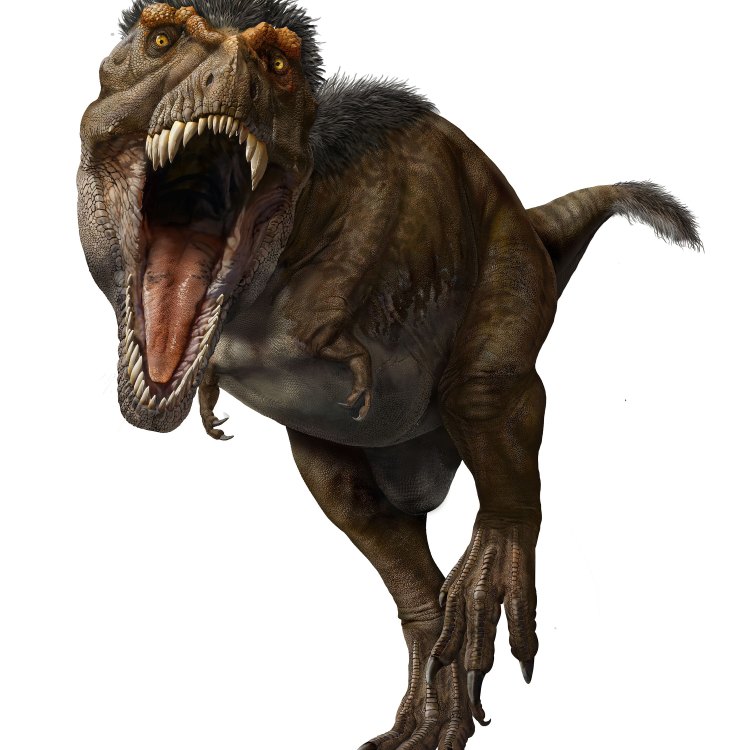
Tyrannosaurus rex
Tyrannosaurus Rex: The King of the Dinosaurs
When one thinks of dinosaurs, the image that often comes to mind is of a massive creature with sharp teeth and powerful jaws – the Tyrannosaurus Rex. This dinosaur, also known as T. Rex, is perhaps the most well-known and iconic of all prehistoric animals. Its distinct features and fierce reputation have captured the imaginations of people for decades, and it continues to fascinate us to this day PeaceOfAnimals.Com.Measuring up to 40 feet in length and 20 feet in height, the Tyrannosaurus Rex was a gigantic creature. It roamed the Earth during the Late Cretaceous period, about 68-66 million years ago. This carnivorous dinosaur was the apex predator of its time, with its powerful jaws and sharp teeth allowing it to dominate its ecosystem. Let's dive deeper into the intriguing and unique features of Tyrannosaurus Rex.
Distinctive Physical Features
The first thing that stands out about the Tyrannosaurus Rex is its large size. It is estimated that an average adult T. Rex could weigh up to 14,000 pounds. This size and weight put it in the same class as modern-day elephants and blue whales. Its massive skull, measuring up to five feet in length, was equipped with powerful muscles that allowed it to crush and rip apart its prey Tussock Moth Caterpillar.The most notable feature of the T. Rex is perhaps its powerful jaws. Its teeth were sharp and serrated, measuring up to 6 inches long. These teeth were used for both crushing and tearing through the bones and flesh of its prey, making it a formidable predator. Interestingly, the T. Rex had a unique way of replacing its teeth. As they broke or fell out, new teeth would grow in their place, ensuring that it always had a full set of strong teeth.
Despite its massive size and powerful jaws, the T. Rex had relatively small forelimbs, with only two fingers on each hand. This has led to much speculation and debates among scientists about the purpose of these small arms. Some suggest they were used for grasping onto prey or for balance while standing up. Others argue that they were simply evolutionary remnants from when the T. Rex's ancient ancestors were smaller and needed arms for hunting. Whatever the reason may be, the T. Rex managed perfectly fine without fully-developed forelimbs, thanks to its strong hind legs and tail.
Overall, the T. Rex's distinctive physical features made it a formidable and intimidating creature, one that would have inspired fear in any prey that crossed its path.
Behavior and Social Habits
The T. Rex was not only physically imposing but also had a unique set of behaviors. It is believed that they were solitary animals and did not form social groups or packs like some other dinosaurs. However, it is possible that they may have formed temporary pairs during mating season. Their solitary lifestyle was due to their aggressive and territorial nature, making it difficult for them to coexist with each other.The Tyrannosaurus Rex was also known to be an apex predator, meaning it was at the top of the food chain and had no natural predators. This allowed it to shape the ecosystem it lived in, as it controlled the population of its prey and influenced the balance of the entire ecosystem. This dominance can still be seen in modern-day ecosystems, where apex predators play a crucial role in maintaining the balance of nature.
Reproduction and Extinction
Like other dinosaurs, the T. Rex reproduced sexually through egg-laying. Fossil evidence suggests that they built nests and laid their eggs in them. However, the exact details of their reproductive behavior remain unknown, as no intact eggs have been found to date. Females were thought to lay around two dozen eggs at a time, which would hatch after a few months.Despite its powerful nature and top predator status, the Tyrannosaurus Rex became extinct about 66 million years ago. One theory suggests that an asteroid impact caused a drastic change in climate, leading to the extinction of the T. Rex and many other species. Another theory suggests that a gradual extinction through competition and food scarcity may have caused its demise. Whatever the cause may be, the T. Rex no longer roams the Earth, and we can only marvel at its remains in the form of fossils.
Human Use and Conservation Status
The T. Rex may be extinct, but its legacy lives on. Fossil research of this dinosaur has provided invaluable information about prehistoric life and evolution. It has also been a source of education and entertainment for people of all ages, with museums around the world displaying reconstructed skeletons and models of the T. Rex.The conservation status of the Tyrannosaurus Rex is, of course, extinct. However, its impact on the ecosystem is still felt today. As an apex predator, it played a vital role in shaping its environment, and its absence has had a ripple effect on the ecosystem. It is a reminder that every species has its place and purpose in nature, and their disappearance can have a significant impact on the world around us.
Interesting Facts about Tyrannosaurus Rex
1. Despite its massive size, the T. Rex is believed to have been a fast runner, with a top speed of about 20 miles per hour.2. The small arms of the T. Rex may have been used for balance while hunting or to hold onto prey while it used its powerful jaws to finish the job.
3. Fossil evidence suggests that the T. Rex had feathers on its body, although they were not used for flight like in birds.
4. Some scientists believe that the T. Rex may have had a keen sense of smell, which allowed it to track its prey over long distances.
5. The T. Rex was not the only species of its kind. There were many different species of Tyrannosaurs, including the Nanotyrannus, which was about half the size of the T. Rex.
6. A T. Rex tooth was discovered with bite marks from another T. Rex, indicating that they may have occasionally fought each other for dominance or territory.
The Legacy of the Tyrannosaurus Rex
The Tyrannosaurus Rex may have been extinct for millions of years, but its legacy continues to fascinate and intrigue us. Its sheer size and powerful jaws have captured the imagination of generations of people. The T. Rex was more than just a fearsome predator; it was a vital part of prehistoric ecosystems, playing a crucial role in shaping the world we know today.As we continue to uncover more about this iconic dinosaur, we can only imagine what other mysteries and wonders lie buried in the Earth, waiting to be discovered and shared with the world. But for now, the Tyrannosaurus Rex remains the king of the dinosaurs, a true symbol of power, dominance, and the incredible diversity of life on our planet.
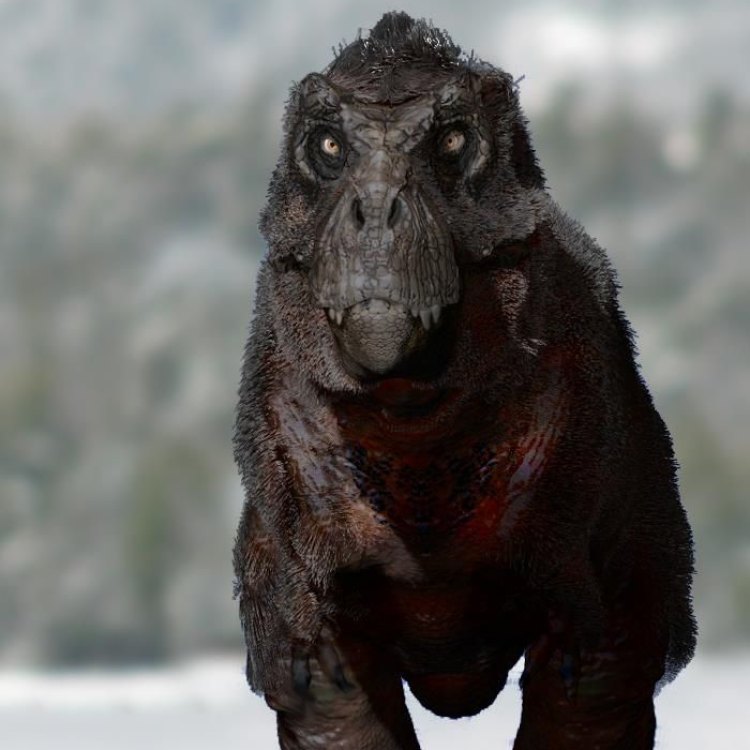
Tyrannosaurus Rex: The King of Dinosaurs
Disclaimer: The content provided is for informational purposes only. We cannot guarantee the accuracy of the information on this page 100%. All information provided here may change without prior notice.




